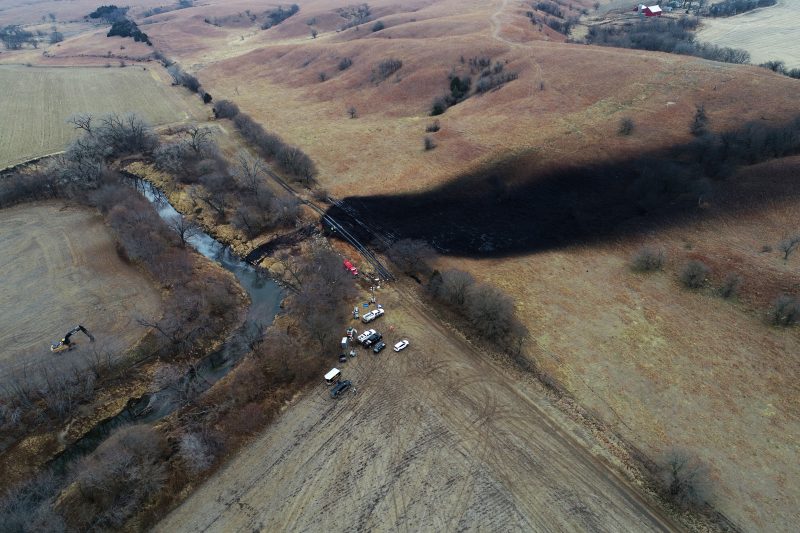For years, American politics was roiled by the debate over building the Keystone XL pipeline, a project aimed at supplementing an existing conduit for petroleum products from Canada to the Gulf Coast. Barack Obama halted the project, Donald Trump resurrected it and, in one of his first acts as president, Joe Biden once again stopped it.
This week, the original Keystone pipeline is in the news for precisely the reason pipeline owners and oil industry executives least like: a massive spill in Kansas that led to thousands of barrels of oil being inadvertently released. It’s one of the largest pipeline leaks in years. It is also one of hundreds of such incidents in the past 10 years and thousands recorded by the federal government.
Opposition to building the larger Keystone XL pipeline was based on two primary concerns, one philosophical and one practical. The philosophical argument was that the nation should not be investing in infrastructure that made it easier to extract fossil fuels, thereby making it more likely that those fuels would be used and thereby add to greenhouse-gas emissions. The practical argument was that pipelines can rupture or leak, threatening the surrounding environment. More worrisome was that the planned route for the pipeline passed over a vital aquifer that provided water for drinking and irrigation for the region.
To reinforce that second point, activists noted the frequency of spills from pipelines. Proponents of the plan noted that, in lieu of an expanded Keystone pipeline, petroleum products were being shipped by rail, which is certainly not a methodology that’s free from problems. Data from the government’s Pipeline and Hazardous Materials Safety Administration (PHMSA), though, shows that there have both been more spills from rail transit over the past 10 years and that the amount released from pipeline spills is more than three times that lost from train-based accidents. This makes sense, given that trains carry only a limited amount of product.
It is worth noting that PHMSA has recorded about 500 incidents in which pipelines have spilled crude oil over the past decade — a lower rate of incidents than in the 40 years before. What’s more, those spills have been smaller than spills in the past. In the 1970s, there were more than 1,000 pipeline spills, releasing an average of 900 barrels of oil. In the 2010s, there were half as many, releasing less than half as much oil on average.
The recent spill in Kansas stands out as particularly large for the recent era, as indicated by the size of the circle in November 2022, below. But it wouldn’t stand out so much had it occurred in, say, 1972.
What’s shown above is only spills of crude oil from pipelines. Most crude-oil spills aren’t from pipelines, but from other systems of transit including rail and, of course, trucks. Nor is crude oil the only substance that spills. PHMSA has tracked tens of thousands of spills of a wide range of hazardous substances over the past 50 years — many of which were of much larger scale than what unfolded in Kansas.
There’s another important caveat here: Not all of what is spilled is lost. Often, a substantial portion is recovered. Since 1985, about 40 percent of spilled substances have been recovered, including more than 60 percent of crude oil that spills from pipelines. In Kansas, thousands of barrels of oil have been recovered so far.
Pipeline operators would no doubt argue that the news doesn’t cover the miles of pipeline that function without incident 24 hours a day. It is the case that lots of pipelines don’t attract attention because they simply do what they were built to do. The challenge is that, when they don’t, the repercussions can be significant.
Something that opponents of Keystone XL were able to successfully argue to Presidents Obama and Biden.








